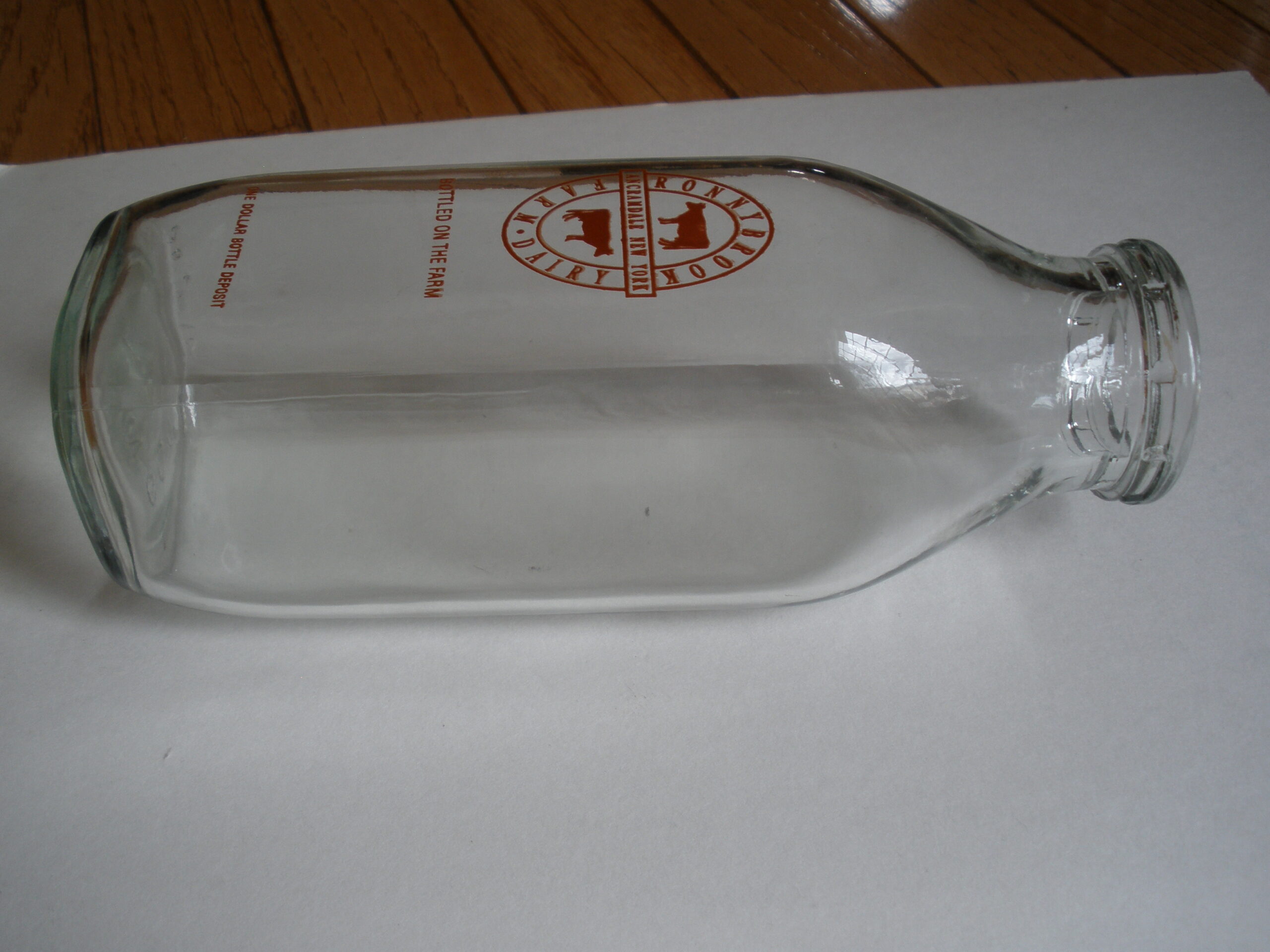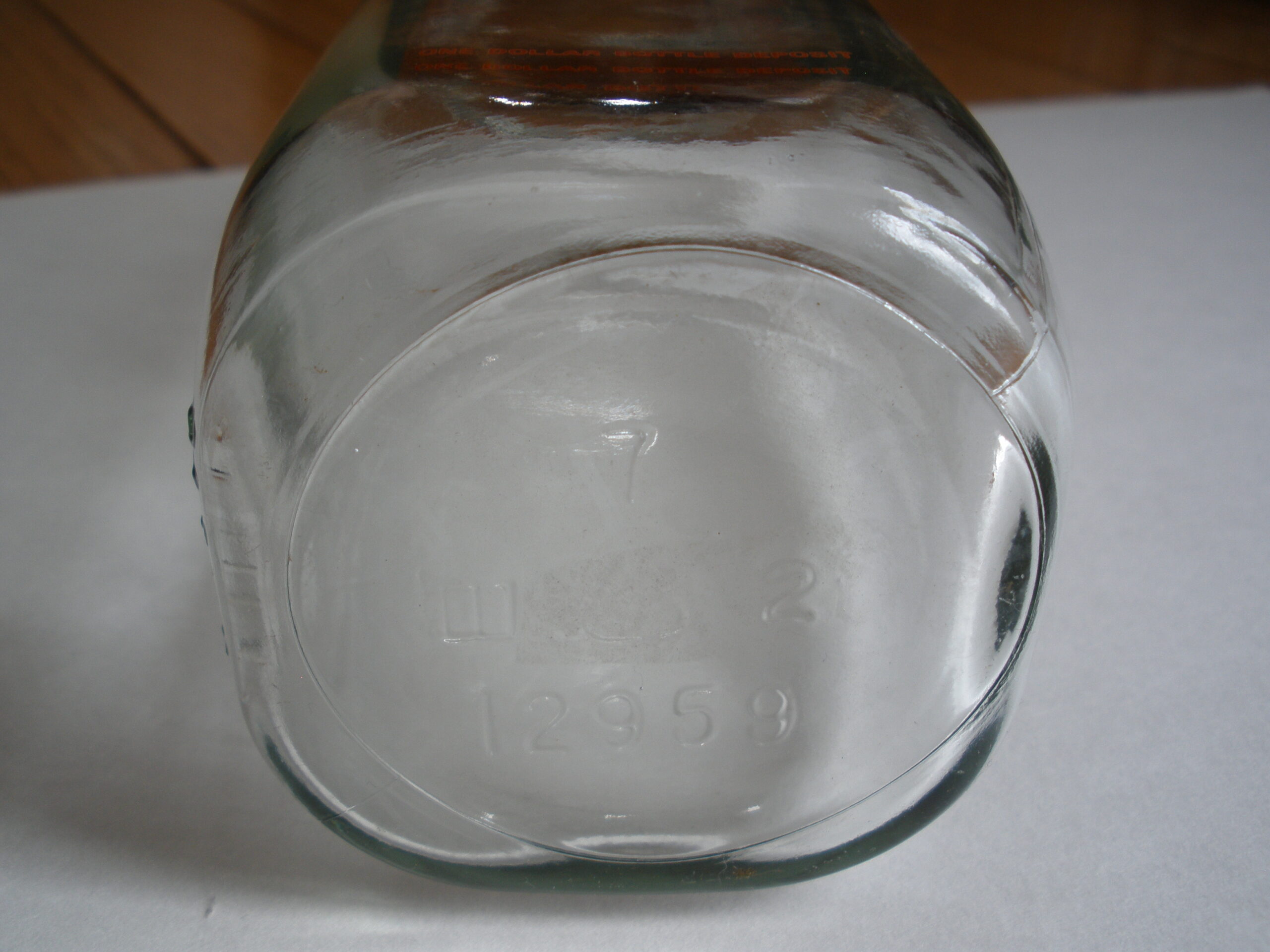For sale is a 1990s RONNYBRROK DAIRY FARM MILK BOTTLE, Ancramdale, NY. This half liter size milk bottle is in excellent condition. Red pyro-glaze lettering with a great graphic of two disagreeable cows facing in opposite directions. The bottom of the bottle is marked “7 12959”. Bottle stands 7 1/4 inches tall. A great milk bottle collectible.
In the early 1990s, the Osofsky brothers decided to bottle unhomogenized milk on their dairy farm. At the time, glass milk bottles were a forgotten relic (like the rotary phone or the typewriter). However, their milk was an immediate hit at Farmers Markets around NYC. Today the name Ronnybrook has become synonymous with high quality super-premium dairy products. According to the New York Times, Ronnybrook’s products are the “Dom Perignon of Dairy!”
One thing unique to dairy bottles is that they were reused many times. This was probably due to the fact that milk had a short shelf life. The consumer only needed the bottle for a couple weeks and milk was only sold locally. A United States Department of Agriculture Survey in the early 1900’s found that the average life span of a milk bottle was 22.5 trips with a range from 6 to 60 trips. The need to reuse milk bottles and prevent their theft by competing dairies drove the name for companies to brand their bottles. As a result, today, vintage milk bottles make great advertising collectibles.
In the early 1900s, many dairies used plain bottles and identified their product with milk caps stating their name. However these bottles were impossible to identify and easily stolen by competitors. One solution was to have a milk bottle made with the dairy name embossed on the glass. One way to do this was to use a generic mold with a round insert or slug plate that had the dairy’s information on it. All of the dairy’s information had to fit in this round slug plate on the front of the bottle. The slug plate on a quart bottle was usually just over three inches in diameter.
Beginning in 1933 a form of silk screening was introduced to put colored labels on milk bottles. The colored label was actually a mixture of lead, silica and borax fused to the glass at a temperature of 1200 degrees Fahrenheit for a period of four hours. Initially it cost slightly more for colored milk bottles compared to embossed ones. Later, it became cheaper and faster to use colored label milk bottles rather than cutting the new molds needed for embossed milk bottles. It also made the labels much more prominent against the white background of the milk. Some dairies felt that these brightly colored milk bottles reduced the temptation of other dairies to steal and reuse their milk bottles.










